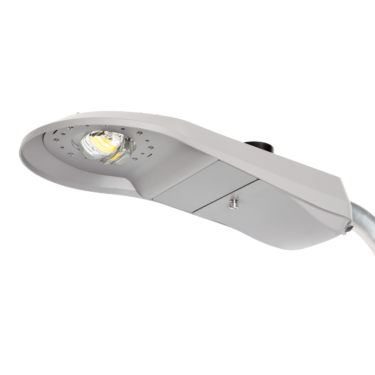
Outdoor Lighting Has Revolutionized Modern Living
From the days of cavemen to more modern times, humanity has always had an aversion to the dark. While our ancestors may have had to worry about what lurked on the fringes of their fire light at night, outdoor lighting plays a more practical role helping to prevent injuries and provide an ability to successfully navigate around town today.
However, the outdoor lighting provided by street lights that we take for granted is actually the byproduct of both scientific advancement and military necessity. In fact, it wasn’t even until the early 20th century that the majority of the public had access to outdoor lighting at night. Let’s take a quick look at a few of the reasons of how outdoor lighting became the public service we use every day.
To Build a Better Light Bulb
While Thomas Edison may have lost the Current War, he could still claim victory when it came to developing the standardized version of the light bulb. Despite Edison’s achievement, room for improvement existed in early light bulb designs that many talented inventors sought to exploit.
During the 1880s, the promise of a light bulb lasting for 1,300 hours may have been satisfactory, but that standard was no longer acceptable once public lighting could be found on every street corner. The race to build a better light bulb was on, which you can trace as to helping lay the foundation for the LED lights commonly used today.
However, that’s not to say the light bulbs produced back in the day were not of the highest quality. In fact, the world’s longest lasting light bulb, commonly referred to as the Centennial Light, has been continuously burning in Livermore, California since 1901.
Better to See You With
Today, one of the most important functions outdoor lighting serves is to help drivers better see pedestrians. But this wasn’t always the case. When cars were first hitting the streets they didn’t even have headlights. Street lights were actually used so pedestrians could see cars, not the other way around.
The first headlamps designed for use with a car were developed and made public in France in 1901. While these lights would help to solve some of the problems that came with driving at night, installing them was prohibitively expensive. As the only component of a car that required electricity, headlights were viewed as a luxury since installing a generator cost nearly the same amount as the car itself.
By 1908, what is often recognized as the ancestor of the modern headlight were beginning to appear as a standard feature on cars. Developed thanks to a tungsten filament invented by Irving Langmuir, not only were headlights a more affordable solution, light bulbs suddenly became cheaper and longer lasting.
A Tactical Advantage
In times before portable lighting, other than the torch, had been made, the business of war was very much 9 to 5. Not only did soldiers need to be able to see the enemy out on the battlefield, but command centers, armies, and field operations all needed light to function, making nightfall prohibitive to continuing operation.
As advances in war made nighttime combat unavoidable, military leaders needed to make the running of their armies a 24/7 activity. That required keeping headquarters and command posts well-lit. By keeping a base open at night, military leaders could generate far more productivity from their men.
The use of outdoor lighting has dramatically changed how we live on a daily basis. Come back next month as we continue to examine how outdoor lighting has revolutionized modern living.




